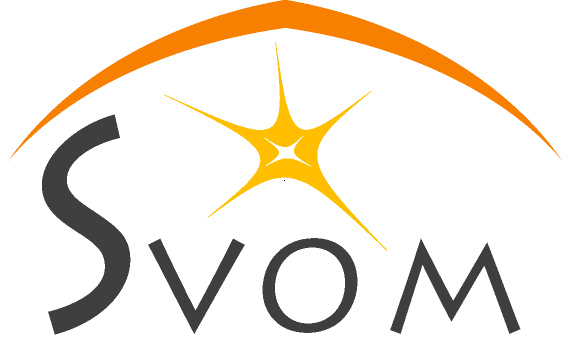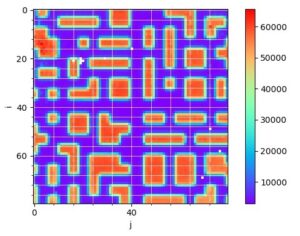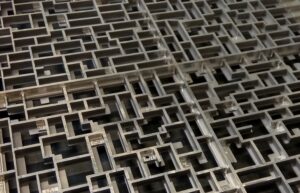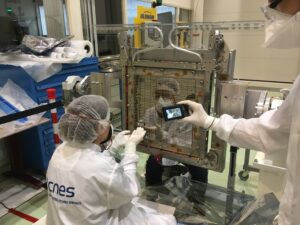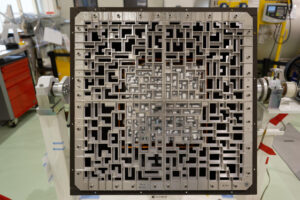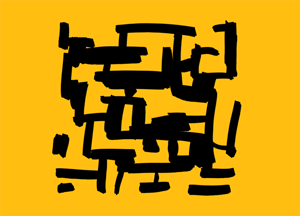The coded mask, recently integrated on the ECLAIRs telescope, makes it possible to localise X-ray sources in the instrument’s field of view. This crucial feature for the detection of gamma-ray bursts was tested from 17 to 20 May at CNES by teams from CEA, IRAP and CNES. On this occasion, the ECLAIRs computer processed the camera data in real time for the first time and detected an X-ray source placed in front of the instrument. The animation below, built from the recorded data, illustrates the detection of the source whose intensity is controlled to mimic the behaviour of a gamma-ray burst that suddenly appears. The image on the left shows the image recorded by the detector and the image on the right the decoded image. When the source is sufficiently bright, the coded mask pattern is projected onto the detection plane and the decoding performed by the computer shows the presence of the source in the centre of the field of view.

The computer software searches for and locates bright spots in the decoded images and sends alerts if one is detected. Once in orbit, the alert provided by ECLAIRs will be the starting point for an observation sequence to study the source in several wavelengths with the SVOM mission’s observation facilities, in space or on the ground, or with other instruments of the international scientific community.
